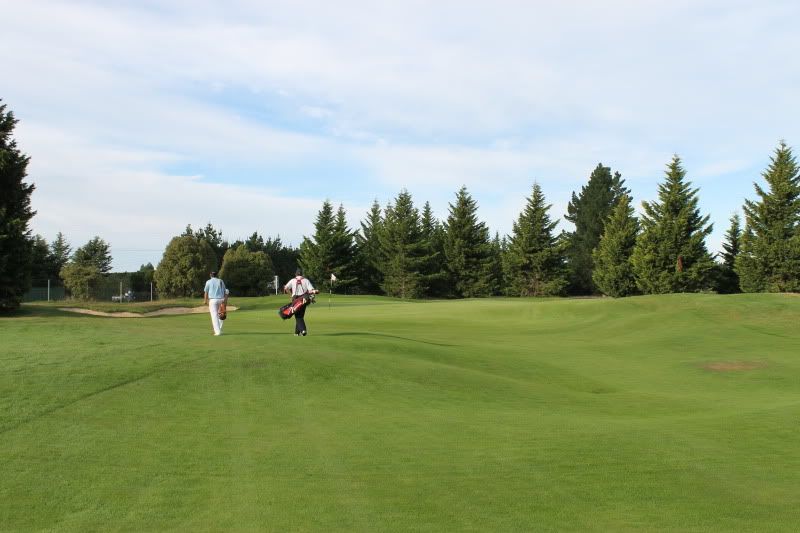The 16th hole is a par 5 playing 441 metres. It comes as a welcome respite after a tough stretch of holes and combines with the 17th and 18th and an exciting combo to finish your round. Very much a half par hole, making 5 on here is achievable relatively easily if you play smart. Making a 4 is very much on the cards or even an eagle if you string together 3 good shots.
From the tee, a fairly straight forward fairway presents itself. The preferred line is to play down the left hand side and a better view of the green is the reward.
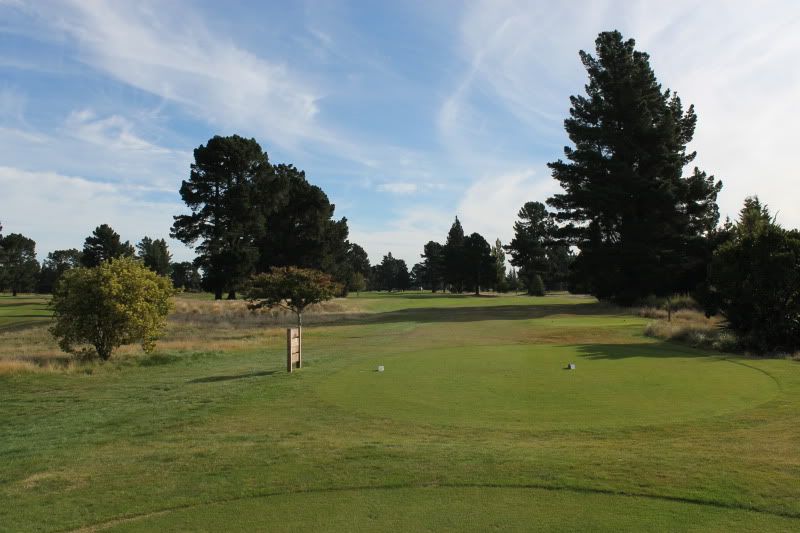
From the left hand side of the fairway, it is clear that a left to right shaped shot will be the most suitable. The pin location will greatly affect the shot trajectory required. A left hand pin is best attacked with a high soft ball flight and supporting contours at the back part of the green make an aggressive play most welcome. A right hand side pin will however require quite a different shot. A low running left to right shot will be needed to overcome the ridgeline running across the green at a front right to back left angle. Trying to fly over this ridge and stop your ball would be incredibly difficult, even with a short club. A small bunker sits front and centre of the green which must be factored in also.
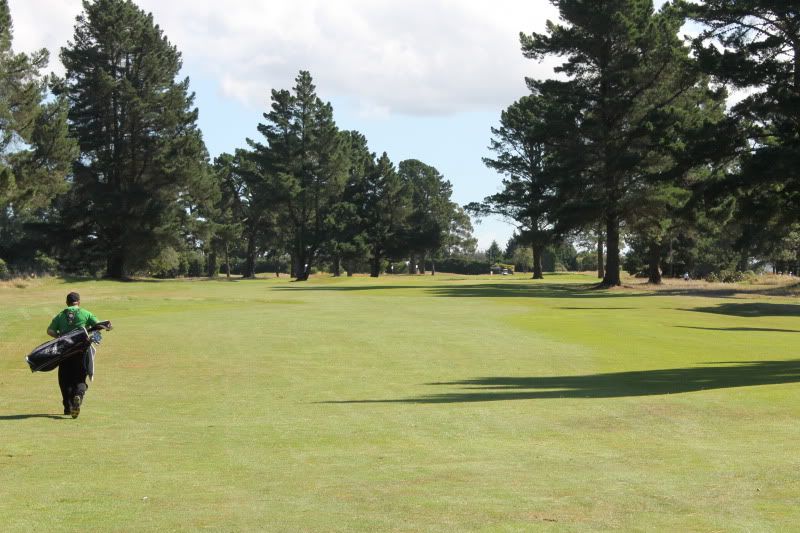
This photo shows the greens surface as approached from square on. It is difficult to make out, but the bottom of the flagstick is in fact hidden by the ridge running from the bunker to the back left. A good portion of the right hand putting surface is being obscured from view by the form the bunker sits into. There is also a small shelf in the back centre of the green which offers a couple of hole locations as well.
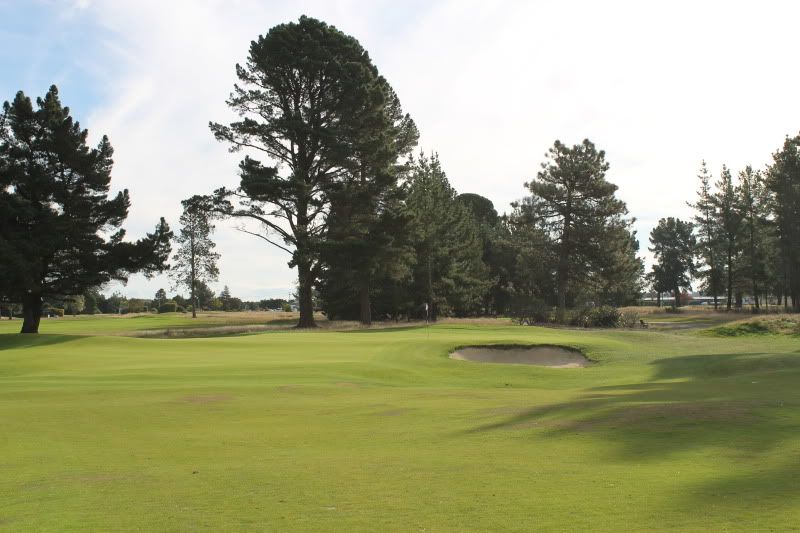
This closer view illustrates a false front on the right hand side and gives a better indication of the scale of the contours. The photos don’t really do this green and surrounds justice and it is for me one of the best complexes on the course.

The 17th hole is a par 4 of 362 metres. This dogleg left hole offers up a generous fairway area yet favours a shot down the left hand portion. Large trees looming down the left has the player inclined to play away from them but the result will be a second shot to an obscured putting surface. Par here is a most satisfactory result and bogies are very easy to come by.
As seen from the tee, plenty of room to the right.
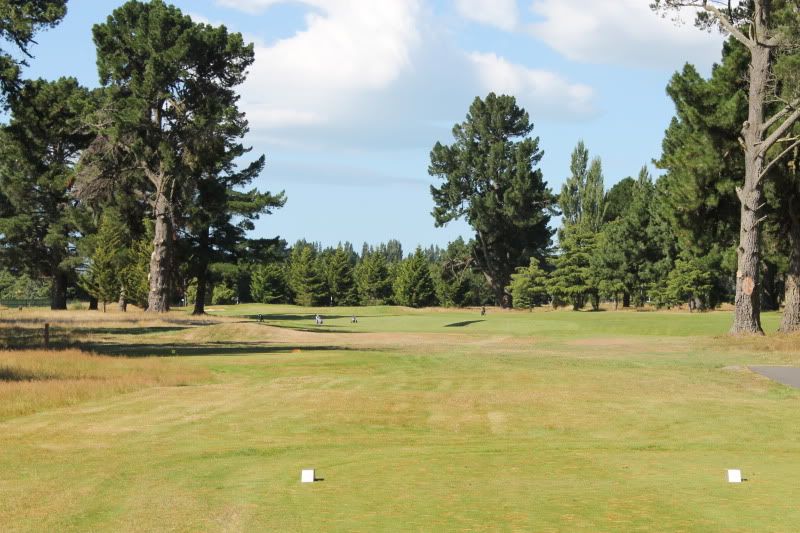
When the approached is viewed from the left hand side, it is easy to see the higher foreground on the right that hides the putting surface when you are out of position on the fairway. This is a feature that I feel creates more angst for a good player rather than having to fly a bunker and having a clear view of the surface.
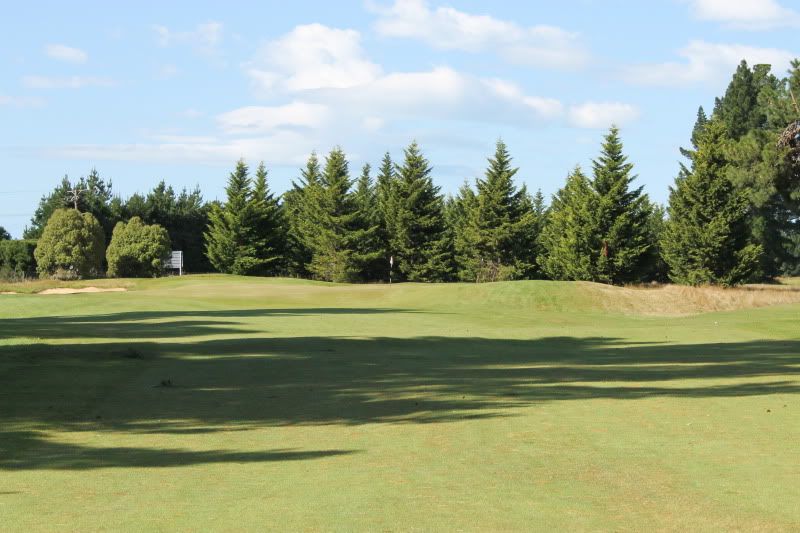
A false front adds further challenge to this approach as does the uneven fairway surface for those running the ball in. The back left bunker does not feature in play too often and is more to deter players away from the road on the other side of the fence.
